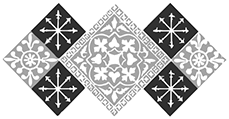Theodosius Of Tripolis
THEODOSIUS OF TRIPOLIS, Greek geometer and astronomer, three of whose works were contained in the collection of lesser writings named 6 fiutp6s aarpovo^ovnevos (sc. rwros), or d /mxpos doTpcwi/ws. 1 Suidas erroneously identifies him with a sceptical philosopher of the same name who lived in the second half of the 2nd century A.D. or later, but, on the other hand, distinguishes him from a native of Tripolis who wrote a poem on spring. He is doubtless the same as Theodosius the mathematician, who is mentioned by Strabo amongst the natives of Bithynia distinguished for their learning, and whose sons were also mathematicians, the same, too, as the inventor of a universal sun-dial (horologium irp6s irav xXijm) of that name who is praised by Vitruvius (De Archilectura, ix. 9). His date, therefore, could not have been later than the 1st century B.C.; he may, however, have lived in the preceding century, inasmuch as the names mentioned by Strabo in the passage referred to above are, as far as we know, arranged chronologically, and Theodosius immediately follows Hipparchus, who made astronomical observations between 161 and 126 B.C., and precedes Asclepiades the physician, who lived at Rome at the beginning of the 1st century B.C.
His chief work tr^<upa, in three books is a tolerably complete treatise on the pure geometry of the surface of a Sphere, and was still the classical book on the subject in Pappus's time. It does not contain (except for a faint suggestion in iii. 11-12) any trace of spherical trigonometry, which, on the other hand, was the special subject of the work having the same title, and included in the same collection, of Menelaus of Alexandria, who lived at the end of the ist century.
A. Nokk (Ueber die Spharik des Theodosius; Karlsruhe, 1847), Heiberg (Litterargeschichtliche Studien iiber Euklid, pp. 43 seq.; Leipzig, 1882), and Hultsch (Jahrbucher jiir classische Philologie, 1883, pp. 415-420, and Autolycus; Leipzig, 1885) have proved that as early as the middle of the 4th century B.C. there existed a Greek text-book on Spherics which, in its essential contents, scarcely deviated from the three books of Theodosius. He must therefore be regarded as merely the editor, or at most the elaborator and expounder, of a doctrine which existed some centuries before him. A careful analysis of Theodosius' work, from this point of view, will be found in A- A. Bjornbo's Studien iiber Menelaos Spharik (Abhandlungen zur Geschichte der mathematischen Wissenschaften, xiv. ; Teubner, 1902).
The Spherics of Theodosius was translated into Arabic at the beginning of the 10th century, and from the Arabic into Latin in the 12th century by Plato of Tiyoli (Tiburtinus) This translation was published in 1518 at Venice, but was found so faulty by J. Voegelinus that he published a new Latin version, together with additions from the Arabian commentators (Vienna, 1529, 410); other Latin translations were published by F. Maurolycus (Messina, 1558, fol.); by C. Clavius (Rome, 1586, 4to); and by Barrow under the title, Theodosii Sphaerica, Methodo Nova luustrata et Succincte Demonstrata (London, 1675, 410). The Greek text was first published, and with it a Latin translation, by I. Pena (Paris, SS 8 . 4to); it has been edited since by Joseph Hunt (Oxford, 1707), and by E. Nizze (Berlin, 1852), but these two editions are founded on that of Pena. There is also a German translation by Nizze (Stralsund, 1826). His two editions are accompanied with valuable notes and an appendix containing additions from Voegelinus and others.
The two other works of Theodosius which have come down to us have not as yet been published in the original. The propositions, without demonstrations, in the work *-pJ iifupuv ical rwTuiv (On Days and Nights), in two books, were given by Dasypodius, in Greek and Latin, in his Sfhaericae Doctrtnae Propoiitiones ( Strasburg, 1572, 8vo). A Latin version of the complete work, with ancient scholia and figures, was given by Joseph Auria (Rome, 1591, 4to). Pappus has given a pretty full commentary on the 1 This collection contained, according to Fabricius, Bibliotheca Graeca, ed. Harles, iv. p. 16, the following books: "Theodosii Tripolitae, Sphaericorum, libri iii. ; Euclidis, Data, Optica, Catoptrica, ac Phaenomena; Theodosii Tripolitae, De Habitationibus et Noctibus ac Diebus, libri ii. ; Autolyci Pitanaei, De Sphaera Mota, et libri ii. De Ortu atque Occasu Stellarum Inerrantium; Aristarchi Samii, De Magnitudinibus ac Distantiis Solis ac Lunae; Hypsiclis Alexandrini, 'Afa^opucds sive De Ascensionibus; Menelai, Sphaericorum, libri iii." Euclid's Data is, however, wrongly included, for Pappus, vn. t makes it part of analysis (4 ivaKviiuvm rims).
first book of this work of Theodosius. His work irepl <Axi\atuiv (On Habitations) also was published by Auria (Rome, 1588). It gives an account of how, for every inhabitant of the earth from the equator to the pole, the starry firmament presents itself in the course of a year. The propositions in it were also given by Dasypodius in his work mentioned above. (T. L. H.)

Note - this article incorporates content from Encyclopaedia Britannica, Eleventh Edition, (1910-1911)


